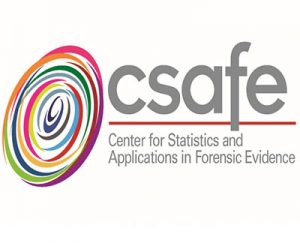
Professor Sandra Guerra Thompson has written a timely book addressing forensic reform in our legal system, Cops in Lab Coats: Curbing Wrongful Convictions Through Independent Forensic Laboratories. The Ohio State Journal of Criminal Law is publishing my book review of Cops in Lab Coats next Spring, and I am delighted to share excerpts from the book review on this blog. Happy reading, and I look forward to any comments.
Law enforcement’s past cover-ups of faulty forensics is at the heart of Sandra Guerra Thompson’s new book Cops in Lab Coats: Curbing Wrongful Convictions Through Independent Forensic Laboratories. Thompson posits that forensic labs should be independent of police departments rather than controlled by prosecutors and used to convict persons no matter the human cost. In brief, Thompson’s book captures the recent history of forensic validation—and invalidation—and its critical impact on the criminal justice system.
Forensic disciplines arose out of crime scene investigations, and law enforcement’s search for compelling evidence to convict. In this unusual development, forensic results were not tested in a lab but rather in the field. Their reliability and importance were indicated by the rate of convictions for crimes not by impartial scientific assessments. Given the intimate—indeed integral—association between forensics and law enforcement, “crime labs” have been influenced by cognitive bias, confirmation bias, and by an impetus to create results for the prosecution, and not for the impartial search and study of science. Thompson discusses cognitive bias by analysts being police department employees, including departmental pressures from being subordinate to the Chief of Police. (Pp. 130-131.) This slant has led to the widespread use of ambiguous evidence in the race to convict individuals, including innocent men and women. Thompson’s inclusion of wrongful convictions mirrors the national conversation where innocence is the primary impetus to ensure that forensic disciplines become more reliable, forensic findings more testable, and forensic inquiries more independent.
Thompson argues that police crime laboratories should be converted to independent forensic laboratories, and that such independence would reduce cognitive bias and enhance laboratory funding opportunities. Under the current regime, police administrators oversee scientific laboratories—a role far beyond their scope of education. (Pp. 181-82.) As Thompson potently explains, “[t]he truth is simple: One cannot properly supervise what one does not understand.” (P. 182.) Cops in Lab Coats documents the overt fraud and perjury of forensic findings that has historically plagued the criminal justice system as a result of a “scientific” work environment aligned with law enforcement and prosecution. This alignment taints findings in ambiguous test results through unconscious cognitive bias. (P. 183.) Consistent with the National Academy of Sciences’ (NAS) seminal report, Strengthening Forensic Science in the United States: A Path Forward, Thompson establishes that such cognitive biases can cause even the most ethical and learned analyst to report findings that relegate an innocent person to prison. (P. 183.) Independent crime labs and the regular use of protocols frequently deployed in other scientific laboratories and university research labs, such as sequential unmasking and blind verifications, can minimize the impact of cognitive bias and confirmation bias. (P. 186.)
Notwithstanding the resistance to wresting labs from police control that Thompson details (p. 183-187), the NAS report’s overall goals regarding forensic reform are increasingly within reach. Crime labs are adopting more rigorous protocols, federal oversight is growing, and federal funding supports greater research. Indeed, the National Institute of Standards and Technology (NIST) hosted the first ever scientific conference on crime lab error management in 2015, an impressive step forward given that many forensic scientists would have been ashamed to admit crime lab error just a few years ago. In short, the question is no longer whether, or how, but how soon we can learn more and strengthen these disciplines.
Despite the advancement in forensic disciplines and research, a significant obstruction remains to restoring reliability in our criminal justice system: the courts. Judges, defense attorneys, and prosecutors continue to misuse, mishandle, and misrepresent forensic findings with impunity. (Pp. 109-115.) Unfortunately, the wave of reform attendant to the forensic sciences seems to have eluded lawyers.
It seems self-evident that the myriad wrongful convictions attributable to forensic fraud would motivate meaningful, systemic reform in the legal system as well. Yet, criminal judges and attorneys appear unmoved by the possibility of a wrongful conviction due to faulty forensics. Practices such as admitting evidence without verification, relying on admittance standards created by other courts, and refusing Daubert hearings on the reliability of expert testimony, force us down the same dangerous path where the fact-finder is left to rely entirely on an individual forensic analyst. It is in these proven unreliable waters that, no matter the advancement in the field, technicians are permitted to dry-lab results, falsify their credentials, and testify beyond the scope of their ambiguous findings. (P. 171.)
Cops in Lab Coats challenges our legal community to do what the forensic community has already done: wake up and take notice of the significant problems and responsibilities attendant to the non-surgical use of forensics in the courtroom.
For a full draft of the book review, including a broader discussion of the recent history of forensic science, how forensic faults have contributed to wrongful convictions, and the role of the judiciary, click here.


Leave a Reply